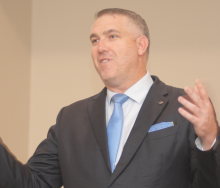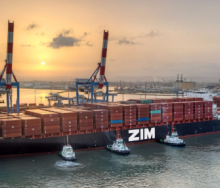Eskom has recorded a significant improvement, with its energy generation moving from an average of 28 000 megawatts (MW) to close to 29 000 MW in the past week, Electricity Minister, Dr Kgosientsho Ramokgopa, announced on Sunday.
“There’s a considerable improvement on the generation side; you can see that we’re beginning to normalise available capacity to be upward of 29 000 MW,” he said.
According to Ramokgopa, Eskom had a generation capacity of 28 932 MW and exceeded 29 000 MW on two occasions from August 7-11.
Ramokgopa was updating the media on the progress made regarding the one-year implementation of the Energy Action Plan (EAP) and provided a weekly generation outlook.
“During winter, demand did surge and, of course, the instrument that the system operator has to balance the grid was to ensure we intensify the stages of load-shedding.
“The expectation now is that we’re entering a less severe period of cold and demand is going to taper down,” Ramokgopa said.
He said Eskom was also working to ensure the long-term sustainability of the units to become more reliable by ramping up planned outages.
“When we went into the winter period, the deliberate act to take out the units for service was going to be reduced so that we have many units as possible producing the megawatts.”
He said Eskom had breached the 60% energy availability factor (EAF) as demand dropped.
“However, for long-term sustainability, it’s important to take out these units when we deem it necessary because when these units come back they sustain levels of performance.”
He said the unplanned capacity loss factor (UCLF) had also decreased. UCLF is the ratio between the unavailable energy of the units that are out on unplanned outages over a period compared to the total net installed capacity of all units over the same period.
Ramokgopa said the UCLF was still at an average of 15 000 MW from 18 000 MW in previous weeks, with plans to keep it under 14 000 MW.
“What we’re going to do and not compromise on is the philosophy of a maintenance plan so you’re able to guarantee the performance of these units going into the future.”
He blamed the underperformance of units on “historic reasons”, including a lack of investment in maintenance, saying that load-shedding had caused “untold” devastation to the economy.
“There are people out of jobs and there are many companies that have folded and are finding it difficult to continue to produce. Retailers have to spend an upfront capital cost to meet the requirements associated with buying generators, and operational costs for purposes of keeping the cold chain and their operations going,” Ramokgopa said.
“Small businesses in the townships are finding it difficult to continue and investors can’t find a legitimate reason to invest in the South African economy - and therefore, there’s an opportunity cost associated with load-shedding.”
He said Eskom was working around the clock to improve underperforming power stations and breakdown issues.
“I’m very optimistic about the future. We set the bar very high. We’re going to improve this energy availability factor.” – SAnews.gov.za













